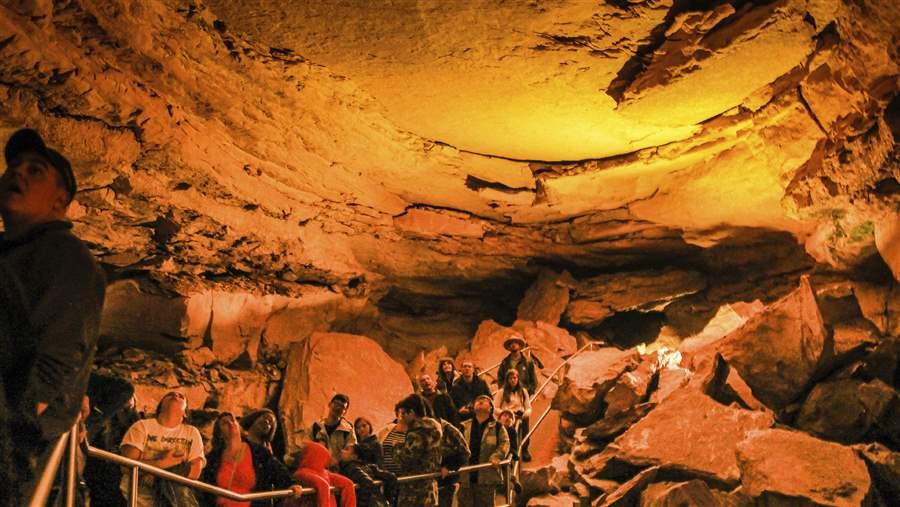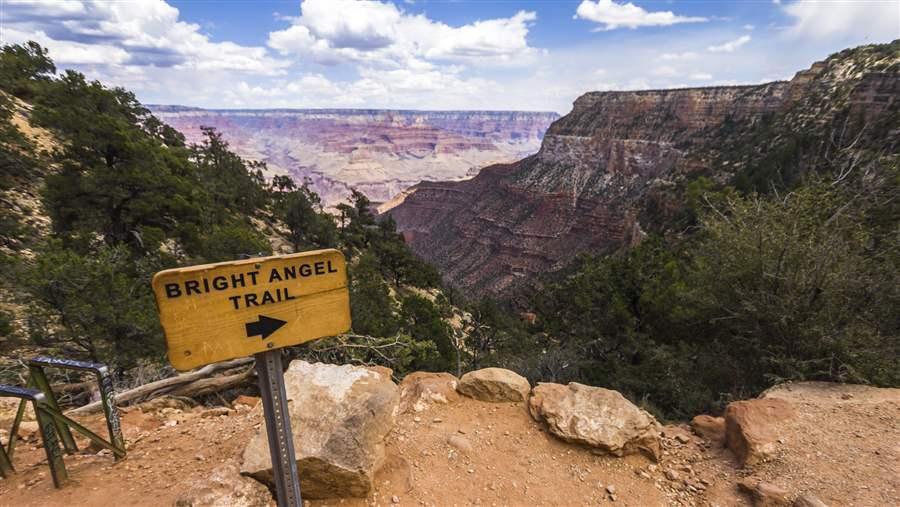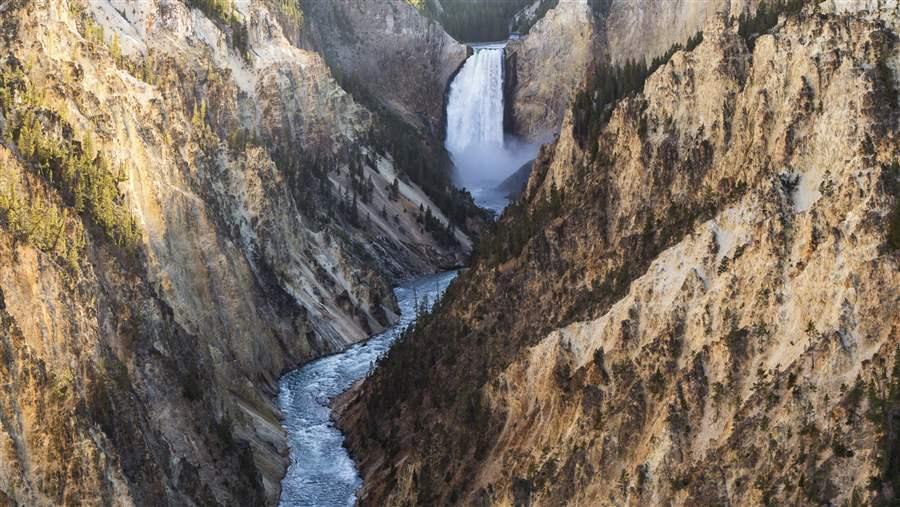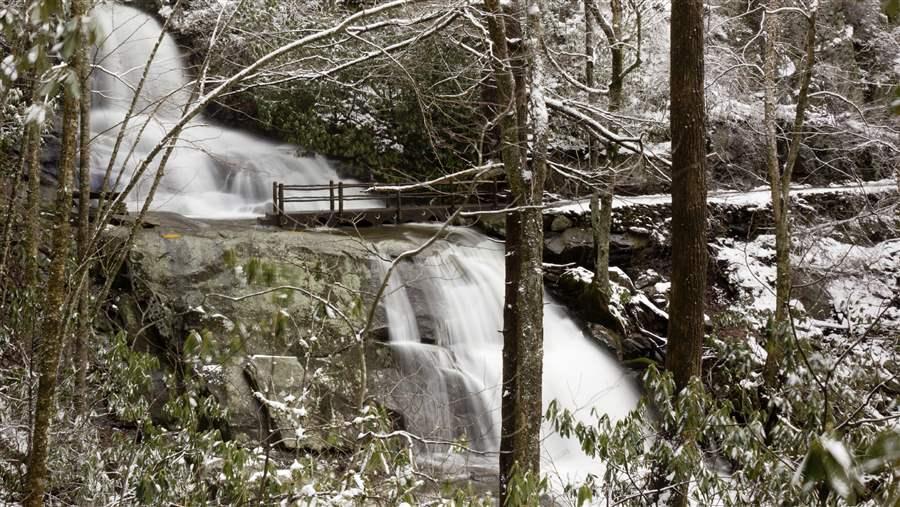Many Popular National Park Trails Are at Risk
President's vacation reminds us why we need to protect the national parks for future generations
Editor's Note: This analysis was updated June 17, 2016, to feature President Barack Obama’s trip to Carlsbad Caverns and Yosemite national parks.
President Obama’s family trip to Carlsbad Caverns National Park in New Mexico and Yosemite National Park in California on June 17 and 18 underscores the importance of, in the White House’s words, "highlighting the true value of the outdoor economy, increasing access to outdoor recreation opportunities and protecting America’s public lands and waters to boost local economies."
Part of that effort should include addressing the funding challenges facing the National Park Service, which turns 100 this year, to ensure that it is well-equipped to manage its natural, historical, and cultural resources for future generations. The NPS estimates it has $12 billion worth of deferred maintenance, such as rotting historic buildings, outdated electrical and water systems, and eroding trails.
We need Congress to provide guaranteed annual federal funding to NPS to ensure that the National Park System remains healthy and functioning for the next 100 years. An expansion of strategic public-private partnerships is also needed to help cover some of the costs.
As we celebrate trails across our nation, here’s a look at the challenges facing four extremely popular NPS trails that—though still operating safely—have substantial and costly deferred maintenance.
Cave Trails, Mammoth Cave National Park, Kentucky
Deferred maintenance cost: $36,390,567
Rank: Serious
 istock
istockVisitors enjoy an NPS-led tour through Mammoth Cave, which is in need of the most trail repairs among national park sites.
Visitors may think of trails as outdoor places, but parks have many kinds of paths, such as the underground trails that snake through the caverns and caves of Mammoth Cave National Park. The site is home to the most extensive cave system on Earth, with more than 400 miles of passageways mapped and surveyed.
The complexity of these delicate labyrinths presents many maintenance challenges, such as repairing potholes, replacing handrails and steps, and installing fiber optic cable, according to NPS. Proactive steps also are required to ensure that caves are protected against illegal intrusions and vandalism.
Bright Angel Trail, Grand Canyon National Park, Arizona
Deferred maintenance cost: $9,062,081
Ranking: Poor
 istock
istockThe Grand Canyon's popular Bright Angel Trail needs more than $9 million in overdue repairs.
The Bright Angel Trail is one of the main hiking paths in the Grand Canyon. Visitors follow a steep dirt trail for 19 miles round trip, beginning at the canyon’s South Rim. This historic trail, established in 1891 and acquired by NPS in 1928, is considered one of the safest trails in the park, but with the heavy use by hikers and mule trips to Phantom Ranch, maintenance issues have accumulated.
The challenges include repairing or replacing the trail walking surface and addressing structural deficiencies in retaining walls, water drainage components, and other features. These and other issues require remediation to restore the trail to acceptable condition.
Brink of the Lower Falls Trail, Yellowstone National Park, Wyoming
Ranking: Serious
 istock
istockThe National Park Service says restoring the Brink of the Lower Falls Trail, which connects visitors to a close-up view of the Yellowstone attraction, will cost more than $5 million.
The National Park Service says restoring the Brink of the Lower Falls Trail, which connects visitors to a close-up view of the Yellowstone attraction, will cost more than $5 million.
The Yellowstone River plummets 308 feet over the Lower Falls of the Grand Canyon of the Yellowstone, the park’s largest and most famous waterfall and one of its main attractions. Adventurous hikers can access the Brink of the Lower Falls Trail from the North Rim Drive for spectacular close-up views.
The NPS cites five deferred maintenance work orders for this trail, and all are associated with the trail tread, or walking surface.
Laurel Falls Trail, Great Smoky Mountains National Park, Tennessee
Deferred maintenance cost: $1,920,958
Ranking: Serious
 istock
istockBy National Trails Day, hikers aren’t likely to find snow on the Laurel Falls Trail in Great Smoky Mountains National Park, Tennessee, which NPS says needs close to $2 million in repairs.
The Laurel Falls Trail is a popular path in the Great Smoky Mountains National Park, the most visited NPS site in the country. The hike is just 2.6 miles round trip and offers beautiful views of the 80-foot-high Laurel Falls, for which the trail is named.
Because the trail is paved, hikers rate it as great for beginners, but NPS records indicate that some serious repairs are necessary to restore the path to adequate condition. The needed work includes repairs to the asphalt walking surface and many of the benches that offer rest along the way.
Marcia Argust directs The Pew Charitable Trusts’ efforts to restore America’s parks







